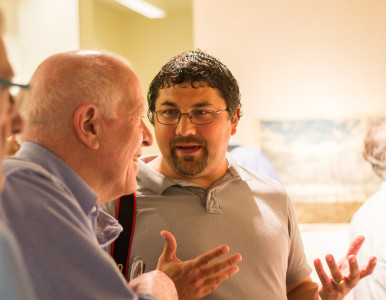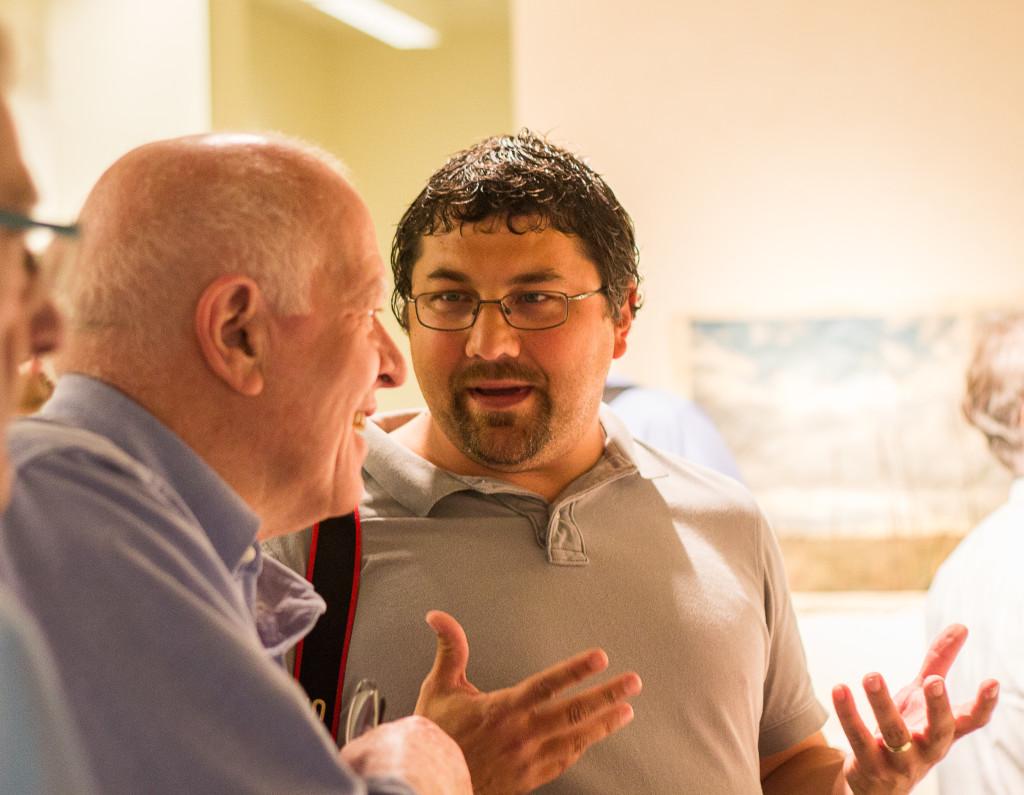Emma Friedlander
friedlan@grinnell.edu
When campus photographer Justin Hayworth first started shooting macrophotography of the Iowa prairie, he had no goal in mind. The project was a fun way to get back in touch with his artistic roots as a photographer. As the series developed, however, it became clear that the photos had deep significance for prairie awareness and conservation.
Last Wednesday, Sept. 2, Faulconer Gallery and the Center for Prairie Studies co-sponsored a talk in Burling Gallery on Hayworth’s “A Closer Look” photo series. The director of the Center for Prairie Studies, Jonathan Andelson ’70, Anthropology, joined Hayworth for the talk.
Hayworth and Andelson agreed that the greater significance of the photo series is to document the rapidly disappearing prairie and remind viewers of the subtle beauty of this ecosystem.

“A lot of the power [of photography] comes from documenting,” Hayworth said. “It may be that one day many of these plant and animal species are gone. If that ever does happen, at least you have an account of things that are no longer there. I hope it doesn’t get to that point, but when you talk about one tenth of one percent…”
The figure, “one tenth of one percent”, represents the fraction of the original Iowa prairie that still exists. Andelson explained that originally, tall grass prairie covered 80 percent of Iowa. The original European explorers of the area in the 19th century readily extolled the beauty and fertility of the prairie, but quickly began to exploit the land with advanced plowing techniques.
“One of the most beautiful things ever created began to come to its predestined end,” Andelson said. “The only advantage is a dramatic increase in food production. That seems to be a sacrifice we’re willing to make. I’m not sure it’s the right decision.”
Andelson has a few suggestions for how to best address the disappearing prairie. He stated the need to mourn what’s lost, protect what’s left, find new ways to farm and eat, restore degraded prairie and appreciate the prairie firsthand.
“Get out into the prairie,” Andelson said. “Get out and enjoy it. Use all five senses.”
Of these five senses, Hayworth and Andelson stress the strength of the visual experience captured through photography. For many of the plants in the series, there exists a larger macro photograph, accompanied by a smaller photograph that shows a normal, zoomed out view of that same subject. Hayworth explained that the aim is to stimulate viewers in a new, visual way so as to increase their attention and awareness.
“I was thinking about trying to show people something in a way they’d never seen it before,” Hayworth said. “It’s that first impression to get people to stop and think, ‘Oh, that’s cool. It’d be bad if that wasn’t around.’”
A few photographs in the series go beyond the visual as well. Post-Baccalaureate Fellow Eden Marek ’15 created paper from the grasses of the Iowa prairie, onto which several of Hayworth’s photos of those same prairie grasses were then printed. Viewers are encouraged to touch the textured paper, so as to experience the prairie in an additional sensory way.
“I saw Eden’s work last year and thought it was cool,” Hayworth said. “When I saw her again, I was like, ‘Hey, paper from prairie plants? Maybe there’s something there.’ And I think it worked out pretty well.”
“A Closer Look” will be in Burling Gallery through Oct. 11. Hayworth will also be offering a macrophotography workshop this Friday, Sept. 4, in Burling Gallery from 4 p.m. to 6 p.m.





























































